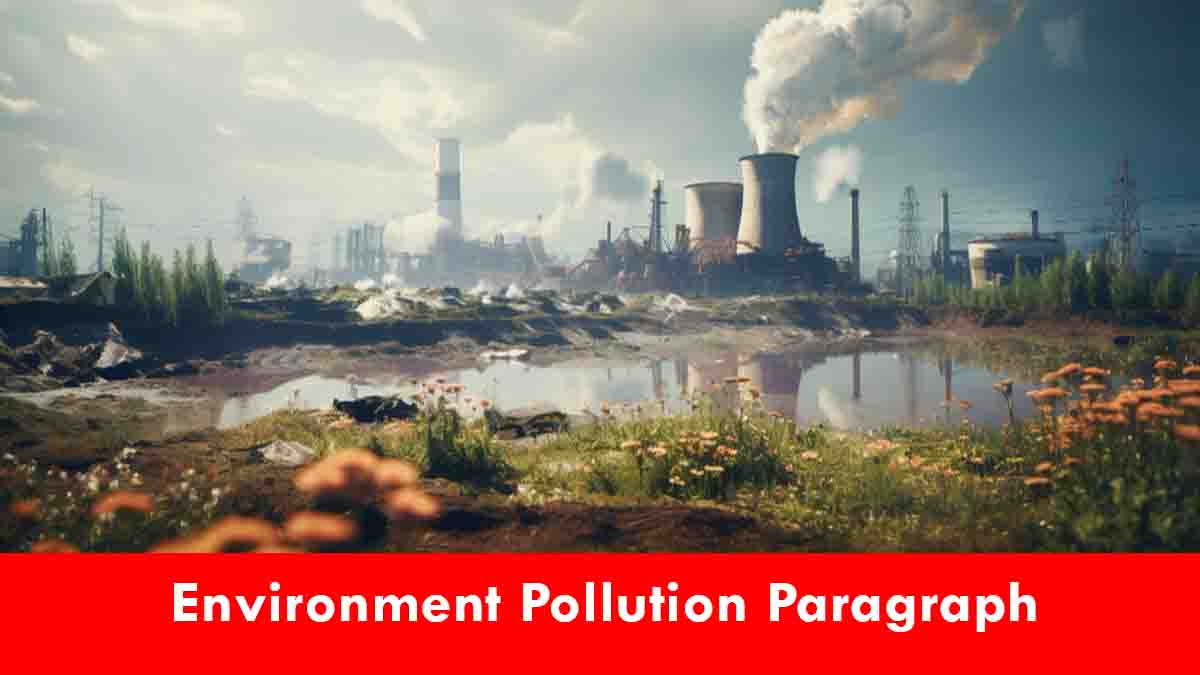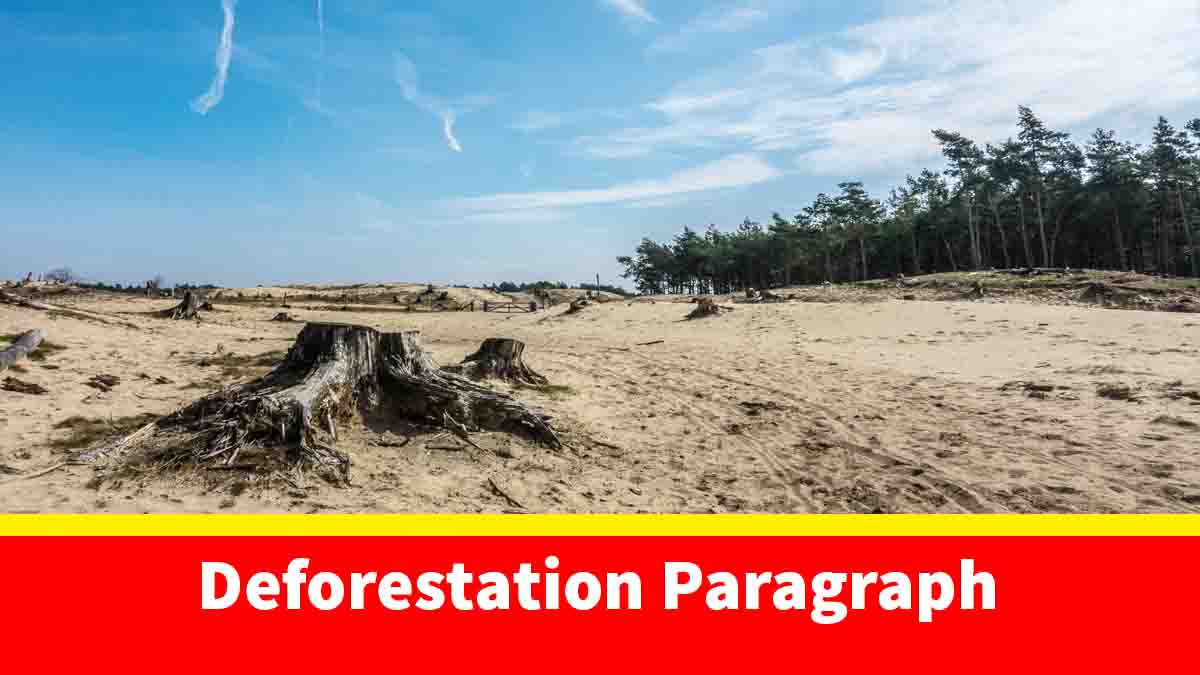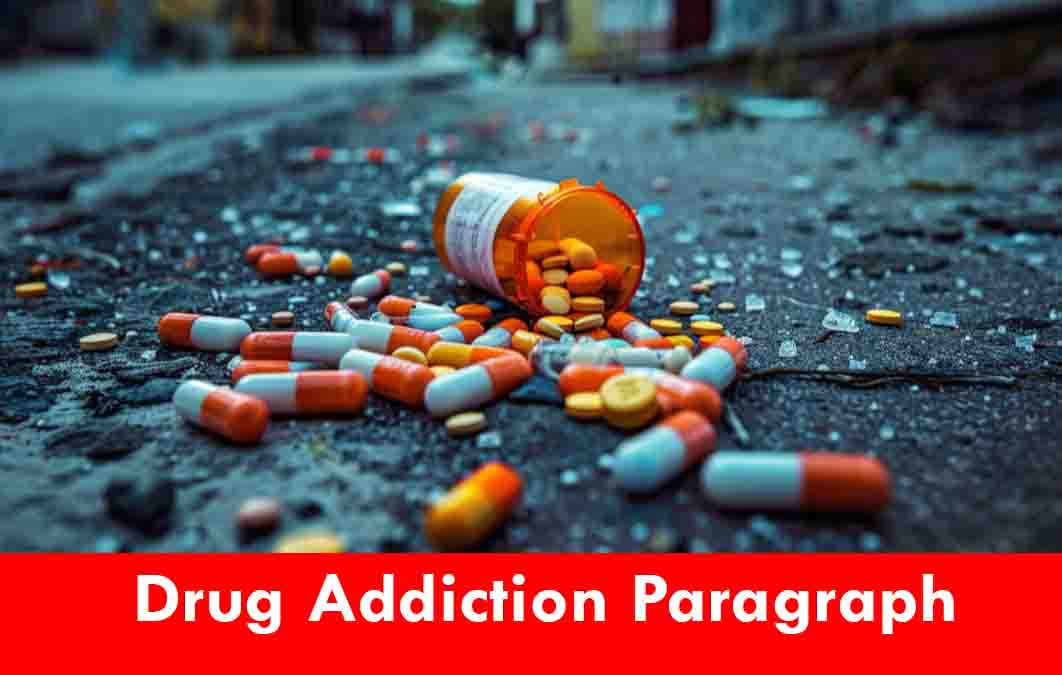Environment pollution Paragraph | If you’re searching for an Environment pollution Paragraph, then Paragraphs BD website is the right place for you.
In this article, we’ve shared some paragraphs on Environment pollution. Here you can learn Environment pollution Paragraph in 150, 250, 300 Words. Our writing is suitable to use for all the students of class 6 to 12 candidates. You can use our writings in your examinations to get better .
Environment Pollution Paragraph in 150 Words
Environmental pollution is now becoming a critical issue in today’s world. It’s impacting the planet and human health. It results from the release of harmful substances into the air, water, and soil. Some of the major contributors for environmental pollution are industrial emissions, vehicle exhaust, and improper waste disposal. Environment Pollution means the combination of air, water and soil pollution.
Air pollution leads to respiratory diseases and global warming, while water pollution affects aquatic life and drinking water quality. Soil contamination harms agriculture and biodiversity.
We face various effects of pollution in our overall life. It causes health problems like asthma and cancer, damages ecosystems, and contributes to climate change. We all should give some effort to reduce pollution. Like making stricter rules, promoting renewable energy, and teaching people about recycling and saving resources. To reduce pollution and protect the environment for future generations, working together is necessary
Environment Pollution Paragraph in 250 Words
Environment pollution is a pressing global issue that affects the health of the planet and its inhabitants. Pollution occurs when harmful substances contaminate the air, water, and soil. Industrial activities, vehicle emissions, and improper waste disposal are major sources of pollution. Air pollution from factories and cars releases toxic gases and particulate matter. These lead to respiratory diseases, cardiovascular problems, and contributing to climate change.
On the other hand, water pollution is caused by industrial waste, agricultural runoff, and plastic waste, threatens marine life and contaminates drinking water sources. This not only affects aquatic ecosystems but also poses health risks to humans who consume contaminated water or fish. Soil pollution is caused from pesticides, heavy metals, and other chemicals degrades the quality of soil. It impacts agriculture and reduces biodiversity.
The consequences of environmental pollution are far-reaching. It affects human health, causing diseases like asthma, cancer, and heart disease. The wildlife suffers as habitats are destroyed and food sources are contaminated. Additionally, pollution contributes to global issues such as climate change and the depletion of the ozone layer.
To solve the environmental pollution, it requires a multi-faceted approach. Governments must enforce strict regulations on emissions and waste disposal. The adoption of renewable energy sources, such as wind and solar power, can reduce reliance on fossil fuels.
Public awareness and education about the importance of recycling, conservation, and sustainable practices are crucial in driving change. Individuals can also make a difference by reducing waste, using eco-friendly products, and supporting environmental policies. Together, we can work towards a cleaner, healthier environment.
Environment Pollution Paragraph for Class 9-10, SSC and HSC
Environmental pollution is a growing problem that seriously harms the earth’s ecosystems and human health. Environmental Pollution happens when harmful things are put into the natural environment and cause negative changes. The main types of pollution are air, water, and soil pollution. Each type are coming from different sources and causes different problems.
Air pollution is primarily caused by emissions from vehicles, industrial processes, and the burning of fossil fuels. This the harmful pollutants such as carbon monoxide, sulphur dioxide, and particulate matter are released into the atmosphere. These lead to respiratory and cardiovascular diseases, and contribute to global warming. Air pollution can reduce visibility and harm public health.
Water pollution arises from industrial discharges, agricultural runoff, and plastic waste. Pollutants like heavy metals, chemicals, and germs get into water, harming fish and other aquatic life and making the water unsafe to drink or swim in. The presence of microplastics in oceans has become a significant concern. As they are ingested by marine organisms and enter the food chain, posing risks to both wildlife and humans.
Read More: Padma Bridge Paragraph 100, 150, 300 Words | Class 6-12
Soil pollution is caused by the use of pesticides, fertilisers, and the improper disposal of industrial waste. These pollutants degrade soil quality, reduce agricultural productivity, and harm organisms that live in the soil. Polluted soil can release harmful substances into groundwater, causing more environmental harm.
The impacts of pollution are extensive. Human health gets worse, with more cases of diseases like asthma, cancer, and heart disease. Animals suffer as their homes are destroyed and food chains are broken. Also, pollution makes global problems like climate change and loss of species worse.
To fight with environmental pollution governments must enforce strict environmental rules. Using renewable energy can cut air pollution, and better waste management can help with water and soil pollution. Teaching people is key for sustainable living. People can help by reducing waste, recycling, using eco-friendly products, and supporting environmental policies. Moreover, it is essential to work together to create a healthy environment for future generations.

Taher Mahmud is a dedicated teacher and blogger who has achieved great success in his work field. He was born to parents of Mashuk ahmed and Fathema begum and grew up with the love for learning and exploration. After completing his Bachelor’s degree. He is interested in Computer Writings, Designing & internet browsing etc. Moreover, I practice English with my beloved friend MD. Abdul QUDDUS & computer with my friend a smart blogger & designer MD.Juyel Ahmed Liton.
This is our small effort thinking about the young students and the source of good guidence.





